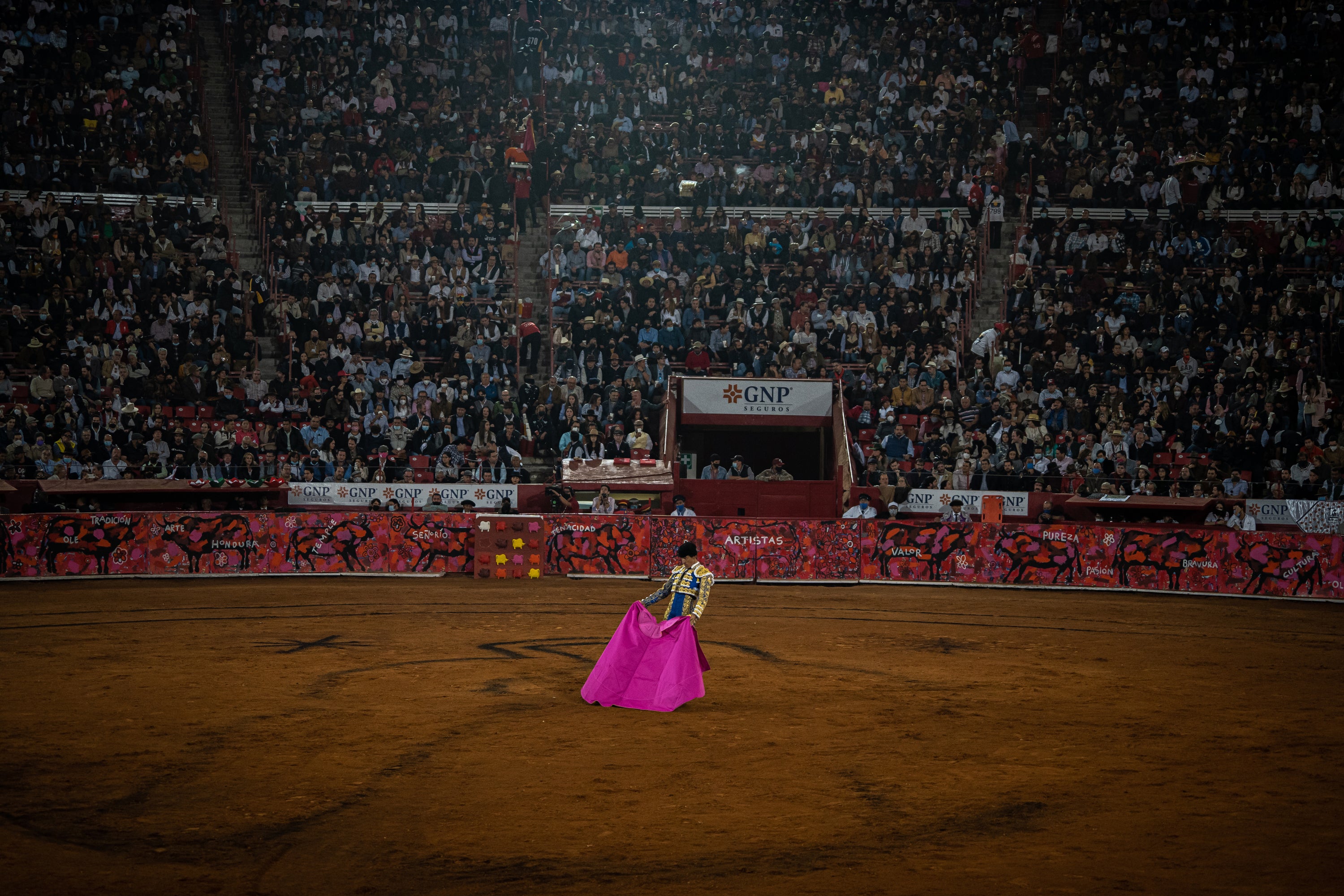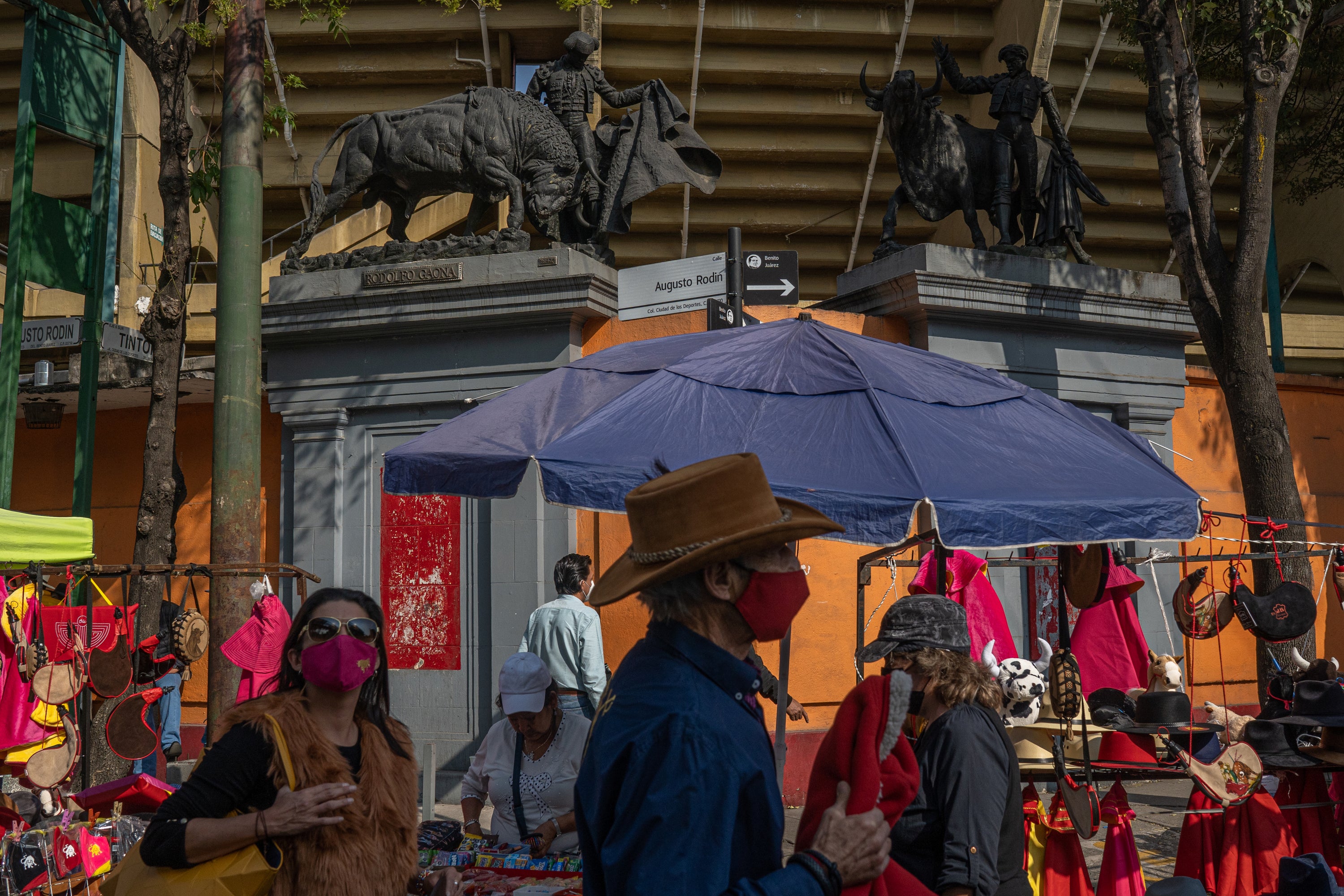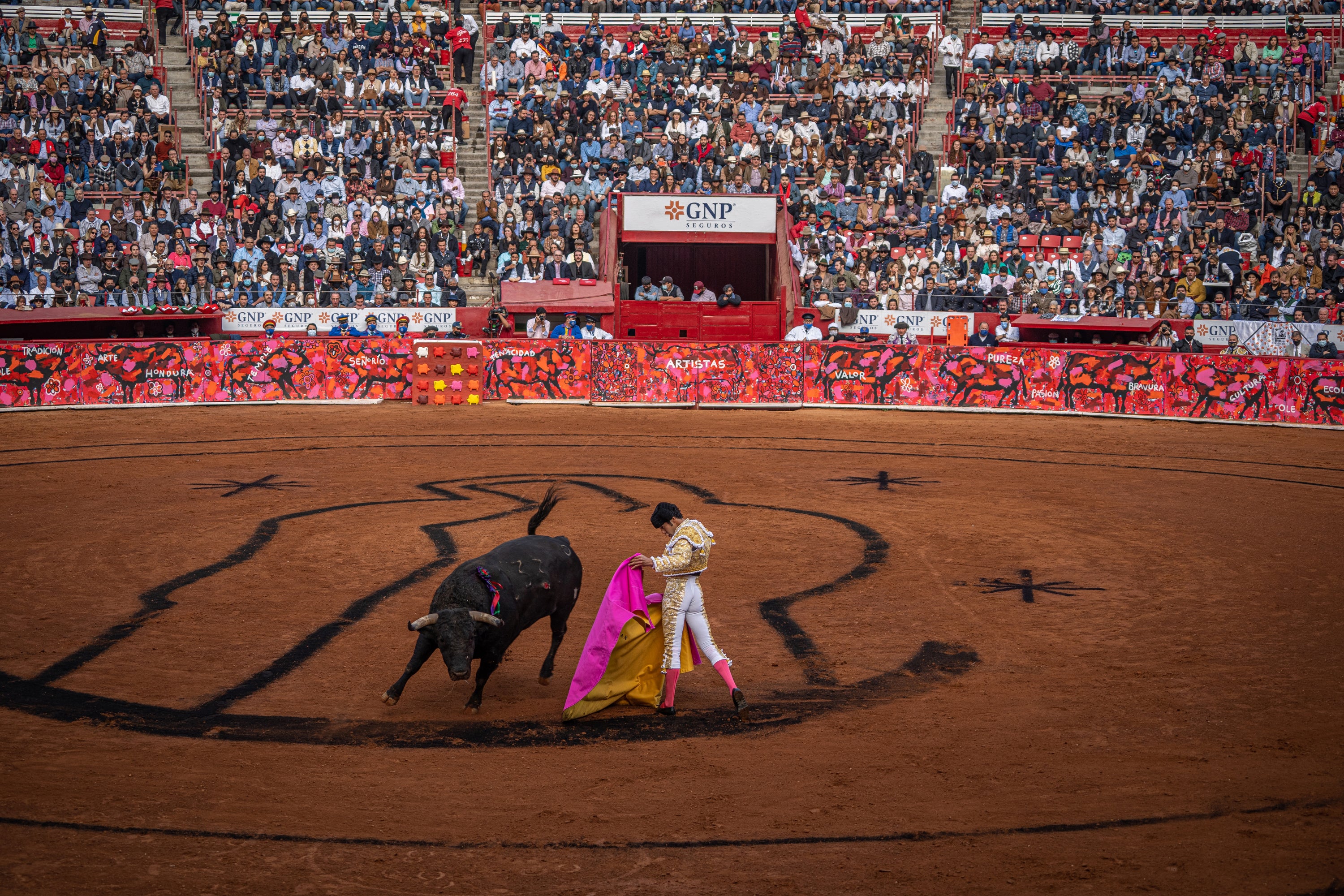Mexican bullfighting is on the front line of the country’s ‘culture wars’
Last Sunday may have seen the last bullfight in Mexico City’s history as the ‘sport’ comes under fire from what some are calling ‘wokeness’, writes Kevin Sieff

The world’s largest bullfighting arena was packed when the matador entered the ring. Forty thousand fans rose from their seats in Plaza Mexico, cheering a spectacle that has changed little since the city hosted its first bullfight to honour Hernan Cortes in 1526.
The bull charged at matador Diego San Roman. He evaded its attempt with a flourish, arching his back.
If the crowd’s reaction on Sunday seemed out of proportion, perhaps it was because they knew they might be witnessing the last major bullfight in Mexico City’s history.
Local lawmakers this month proposed legislation that would prohibit the sport in the capital. The bill, slated for a vote early next year, follows bans in parts of Spain, Ecuador and several smaller Mexican states. But abolition here, in one of the world’s great centres of bullfighting, would be on a different scale entirely, perhaps the greatest blow the sport has suffered.
Outside the stadium on Sunday, anti-bullfighting protesters held signs with photos of mutilated bulls that read, “Don’t make their death your spectacle.” Before the corrida – or bullfight – was over, one of those activists would leap into the ring to scream his defence of the animals.
Mexican bullfighting fans see the legislation as not only an attack on their sport, but a new front in the country's culture war, a willingness to discard history in the name of an imported wokeness.
The Plaza de Toros finds itself in perhaps the most pet-friendly city in the western hemisphere, where domesticated pigs are welcomed at dog parks
“This is a movement that comes here from outside Mexico and tries to take away an ancestral tradition,” said Jose Saborit Santa, director of the professional bullfighting association Tauromaquia Mexicana.
Mexico is one of a handful of countries where bullfighting is still permitted in its oldest incarnation. A bull is raised for the fight and usually dies in the ring, at the tip of the matador’s sword, called an estoque. That the spectacle remains unchanged is among its greatest draws here, making the Plaza Mexico one third of the holy triumvirate of bullfighting grounds, along with stadiums in Seville and Madrid.
“The prohibitionists seem not to understand that we aren’t fighting elephants or dolphins or cats. We are fighting animals who are raised for this, to show their abilities, to have a chance and, if not, to die nobly in the ring,” said Guillermo Leal, the bullfighting correspondent for the Reforma newspaper.
Opponents of the sport, including members of Mexico City’s congress, say they aim to remove a barbaric anachronism from the capital. They have distributed graphic images of the animals suffering in the ring, their bodies dragged out after collapsing in pools of their own blood.
Bullfighters might control the Plaza Mexico, but the activists own Twitter. Among their hashtags: #TortureNotCulture. The bullfighters have created their own: #ProhibitTheProhibition, which they emblazoned on posters during Sunday’s corrida.

The legislation would put a ban on “holding public shows in which bulls, steers and calves are abused, tortured or deprived of life”. It would fine violators as much as £175,000.
The oldest capital in the Americas is a frequent backdrop for enduring debates between traditionalism and modernity. The overwhelmingly Catholic city legalised abortion in 2007 and same-sex marriage in 2009. It hosts religious pilgrimages and underground raves – often during the same weekend. Local politicians stirred controversy recently when they allowed a Christmas tree plastered with advertisements for a battle-royal shooting video game to be installed in a 15th century plaza.
“An environment where the present is affected by stimuli from the pre-Hispanic world, the viceroyalty, modern and postmodern culture,” is how writer Juan Villoro described the city in his recent book, Horizontal Vertigo. “How many different times does Mexico City contain?”
The city’s relationship with animals is another tension. The Plaza de Toros finds itself in perhaps the most pet-friendly city in the western hemisphere, where domesticated pigs are welcomed at dog parks, where a sanctuary has been created for retired donkeys, and where the new municipal constitution recognises animals as “sentient beings who should be treated with dignity”.
“One of the most animal-friendly constitutional texts in the Americas,” Humane Society International called the document.
Still, even some of the politicians supporting the bullfighting ban worry about taking a side in another debate that pits the modern against the traditional. Although the sport has its roots in the arrival of the conquistadors, its fan base has widened over the centuries. Sunday’s corrida honoured the Day of the Virgin of Guadalupe, the anniversary of the day in 1531 when the Virgin Mary is said to have appeared to a young indigenous Mexican man.

Ana Villagran, one of the lawmakers lobbying for the ban, said she believes strongly in animal rights and the righteousness of abolishing the pastime. But she grew up with her grandfather attending the Sunday corridas.
“I can’t bring myself to tell him about my vote,” said Villagran. “I recognise that a lot of this issue is generational and I don’t want to hurt him.”
Villagran has heard the bullfighting community’s critique of her coalition’s proposal. They’ve described the potential economic blow of a ban. They say bullfighting here supports about 18,000 jobs.
Bullfighting advocates also argue that the bulls raised for corridas could not be domesticated or consumed as meat, so the end of the pastime could mean the end of the breed. They argue the irony of banning bullfighting but not factory farming.
Then there’s the question of personal freedom.
“These activists want to manage our lives,” said Leal, the bullfighting correspondent. “They want to moralise to us.”
Some of the fans attending on Sunday had come from thousands of miles away to mourn what they believed might be the end of the sport. Manuel Tolentino Cavazos flew in from the northern state of Coahuila, which banned bullfighting in 2015. Taking his seat, he removed a face mask embroidered with the silhouette of a bull. He lit a cigar.
“Now they’re coming for us in Mexico City,” he said, sighing. “The politicians behind this know they can win votes under the guise of protecting animals. It's not about the issue, it's about pretending to be progressive to get support, just like they did with abortion and same-sex marriage.”
Mexico’s president, Andres Manuel Lopez Obrador, waded into the debate gingerly after taking office in 2018. He suggested in a news conference that he might be open to public referendum on whether to outlaw bullfights nationwide. Then he stopped himself.
“These are polemical topics,” he said.
© The Washington Post
Join our commenting forum
Join thought-provoking conversations, follow other Independent readers and see their replies
Comments



Bookmark popover
Removed from bookmarks